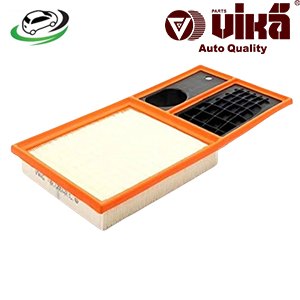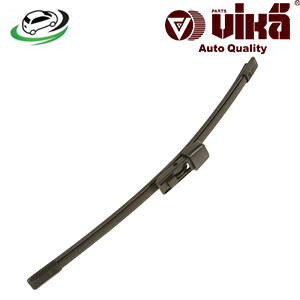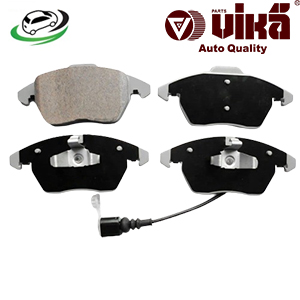-9%
Get Front Brake Pad Kit Audi A1 / VW Jetta/Golf 1K0698151
Brake pad kits are critical components of a vehicle’s braking system, playing a pivotal role in ensuring safety and performance. A brake pad kit typically includes brake pads, hardware, and other necessary components for installation. This guide explores the function, types, signs of wear, diagnosis, replacement, and maintenance of brake pad kits, providing a comprehensive understanding for vehicle owners.
Function and Importance
Brake pads are a crucial part of the braking system. They are designed to convert the kinetic energy of the vehicle into thermal energy through friction, ultimately bringing the vehicle to a stop. The brake pad kit ensures that all necessary parts are available for an effective brake pad replacement, enhancing braking performance and vehicle safety.
- Friction Generation: When the brake pedal is pressed, hydraulic fluid transmits force to the brake caliper, pressing the brake pads against the brake rotor. The resulting friction slows down or stops the vehicle.
- Heat Dissipation: Brake pads are designed to withstand high temperatures generated during braking, dissipating heat to prevent brake fade and maintain effectiveness.
- Protection of Brake Rotors: High-quality brake pads protect the brake rotors from excessive wear and damage, extending the lifespan of the braking system.
Types of Brake Pads
Brake pads come in various materials, each with distinct characteristics and suitability for different driving conditions:
- Organic Brake Pads:
- Made from a mixture of fibers, resins, and fillers.
- Provide a quiet and smooth braking experience.
- Suitable for everyday driving but may wear out faster under high-stress conditions.
- Semi-Metallic Brake Pads:
- Contain metal fibers (e.g., steel, iron) and other materials.
- Offer excellent performance and durability.
- Suitable for high-performance and heavy-duty applications but can be noisier and produce more brake dust.
- Ceramic Brake Pads:
- Made from ceramic fibers and nonferrous materials.
- Provide excellent braking performance, low noise, and minimal brake dust.
- Suitable for a wide range of driving conditions but can be more expensive.
- Low-Metallic NAO Brake Pads:
- Contain small amounts of metal along with organic materials.
- Offer good performance and heat dissipation.
- Can produce more noise and dust than organic pads but provide better stopping power.
Signs of Worn Brake Pads
Recognizing the signs of worn brake pads is crucial for maintaining braking performance and safety. Key symptoms include:
- Squeaking or Squealing Noise:
- A high-pitched noise when braking often indicates that the brake pads are worn and need replacement.
- Some brake pads have wear indicators that produce this sound to alert drivers.
- Grinding Noise:
- A grinding noise suggests that the brake pads are worn down to the metal, causing metal-to-metal contact with the brake rotors.
- This can damage the rotors and reduce braking efficiency.
- Reduced Braking Performance:
- Longer stopping distances or a decrease in braking responsiveness can indicate worn brake pads.
- This can be dangerous, especially in emergency braking situations.
- Brake Warning Light:
- Some vehicles are equipped with a brake warning light that illuminates when the brake pads are worn.
- This warning should not be ignored and requires immediate attention.
- Vibration or Pulsation:
- A vibrating or pulsating brake pedal when braking can indicate unevenly worn brake pads or warped rotors.
- This symptom requires inspection and possible replacement of the brake pads and rotors.
Diagnosing Worn Brake Pads
Diagnosing worn brake pads involves both visual inspection and physical testing:
- Visual Inspection:
- Check the thickness of the brake pads. If they are less than 1/4 inch thick, they need replacement.
- Look for signs of uneven wear, cracks, or damage on the brake pads.
- Physical Testing:
- Listen for unusual noises when braking.
- Feel for any vibrations or pulsations in the brake pedal.
- Pay attention to any changes in braking performance or responsiveness.
Replacement and Maintenance
Replacing brake pads is a critical maintenance task that requires precision and the right tools. Here are the general steps involved:
- Preparation:
- Secure the vehicle on jack stands and remove the wheels to access the brake components.
- Ensure all necessary tools and the brake pad kit are available.
- Remove Old Brake Pads:
- Remove the brake caliper and set it aside without damaging the brake hose.
- Remove the old brake pads and inspect the brake rotors for any signs of damage or wear.
- Install New Brake Pads:
- Apply brake grease to the back of the new brake pads to prevent noise.
- Install the new brake pads and any hardware included in the kit.
- Reinstall the brake caliper and ensure all bolts are securely tightened.
- Check Brake Fluid:
- Check the brake fluid level and top it off if necessary.
- Pump the brake pedal to ensure proper seating of the new brake pads.
- Test Drive:
- Perform a test drive to ensure the new brake pads are functioning correctly.
- Pay attention to any unusual noises or changes in braking performance.
Maintenance Tips
- Regular Inspections:
- Periodically inspect the brake pads for signs of wear or damage.
- Regularly check the brake fluid level and top it off as needed.
- Avoid Aggressive Braking:
- Avoid unnecessary hard braking to extend the lifespan of the brake pads.
- Use engine braking when possible to reduce stress on the brake pads.
- Keep Brake Components Clean:
- Keep the brake components clean and free of debris to ensure optimal performance.
- Regularly clean the brake calipers and rotors to prevent buildup of brake dust.
- Use High-Quality Brake Pads:
- Opt for high-quality brake pads that match your vehicle’s specifications for better performance and longevity.
- Ensure the brake pad kit includes all necessary components for a complete and effective replacement.
Follow us on Facebook for more parts.



